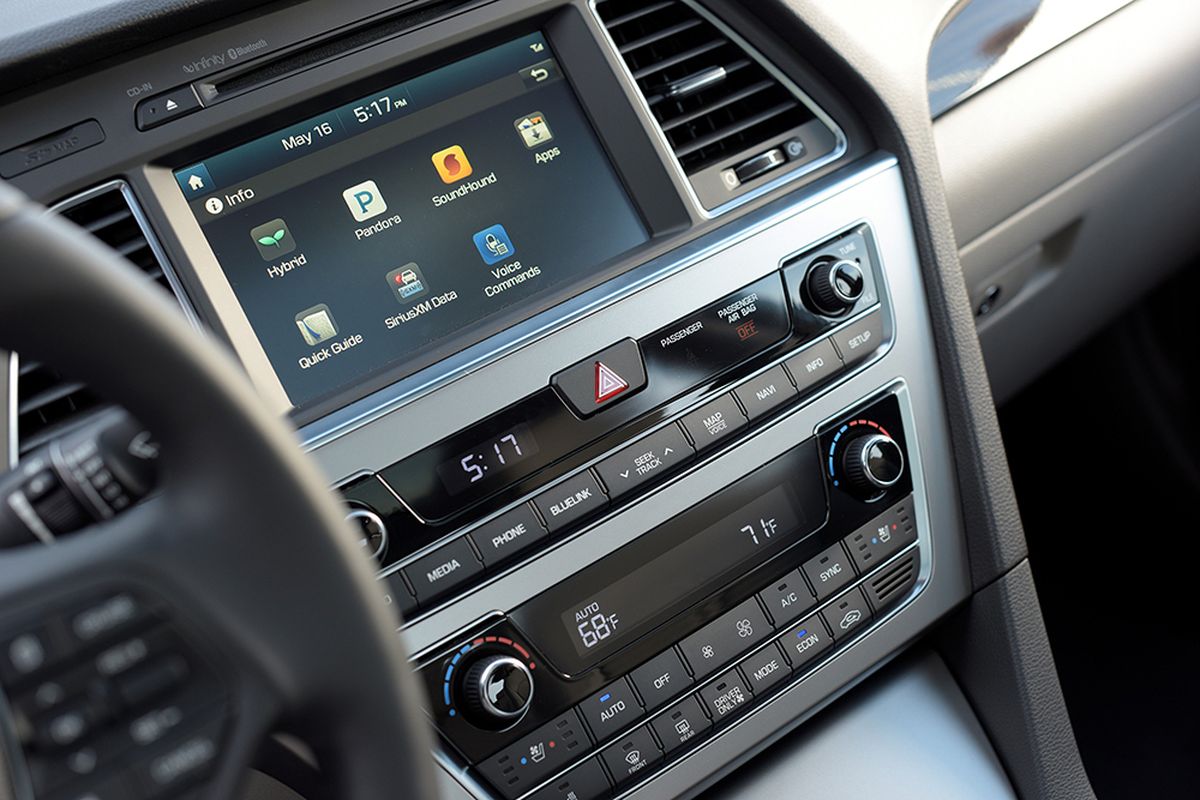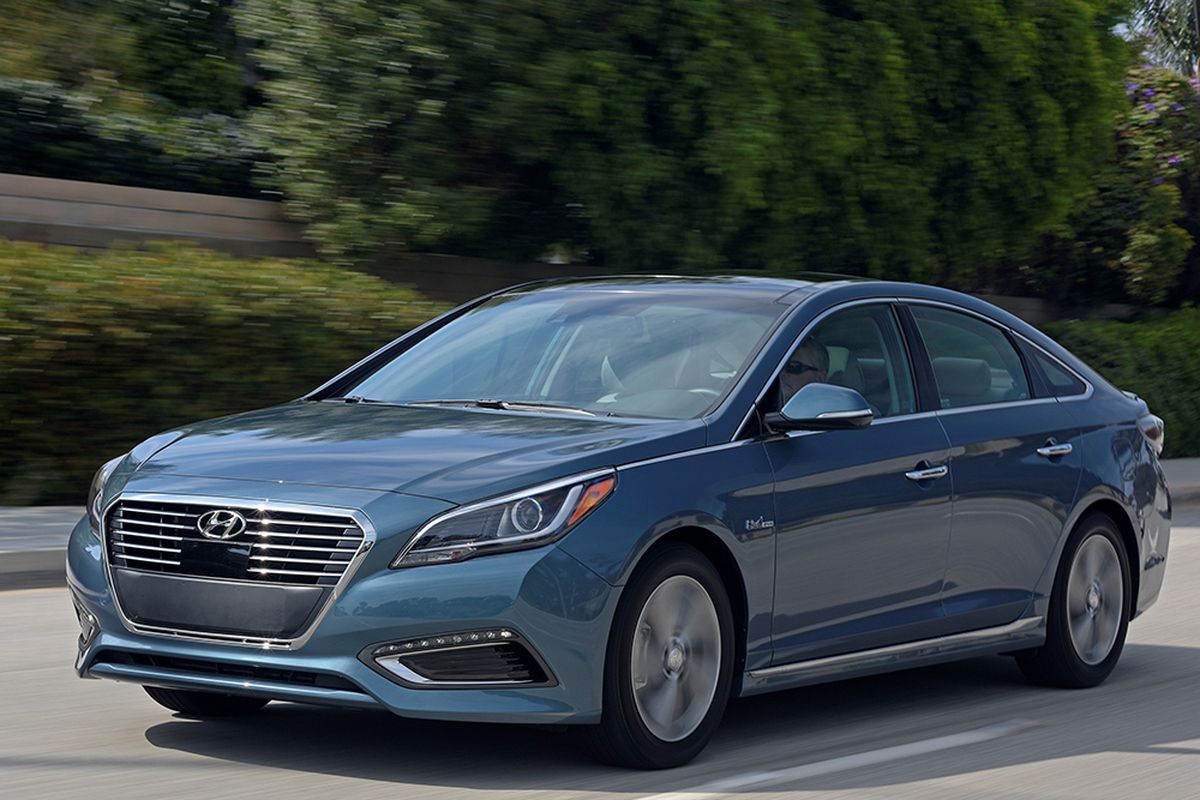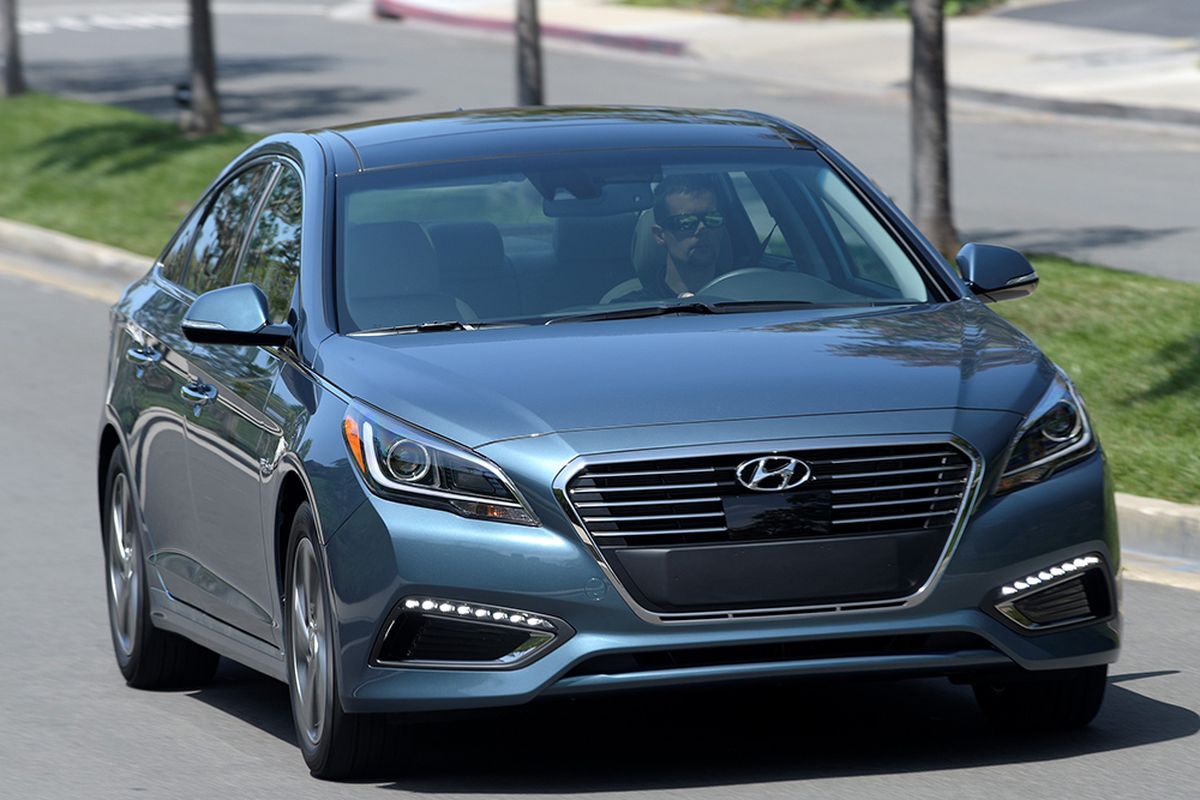Don Adair: Hyundai Sonata Hybrid slips into mainstream
Last year, the Hyundai released the seventh-generation of its midsize Sonata, the very model whose 1988 U.S. debut had inspired faint praise: “The new Sonata is the ideal car for a family whose expectations don't go much beyond decent transportation at a reasonable price,” opined Car and Driver. (hyundai)
Substitute dogged for relentless in Lexus’s relentless-pursuit-of perfection tagline and you’ve described Hyundai’s passage into the mainstream.
It hasn’t always been pretty but Hyundai has battled through.
Last year, the Korean maker released the seventh-generation of its midsize Sonata, the very model whose 1988 U.S. debut had inspired faint praise: “The new Sonata is the ideal car for a family whose expectations don't go much beyond decent transportation at a reasonable price,” opined Car and Driver.
Sub quality for decent and you’ve described the 2016 Sonata ($24,235, including transportation). Certainly, the family that acquires a 2016 Sonata 2.0T ($34,000) has heightened expectations: included on its standard-features list are such class-above features as adaptive cruise, automatic high-beams, heated steering wheel, heated and ventilated front seats, rear-window sunshades and a premium nine-speaker audio system.
Of course, Hyundai has built a career of loading otherwise decent cars with high-end features. The 2015 Sonata Sonata was a truly good car, though. Aside from the expected generational updates — roomier cabin, improved materials quality, new and improved electronics, better mileage — it felt like a car that had arrived.
Platform upgrades — a revised rear suspension, subframe tweaks — enhanced ride quality, handling and steering feel and accuracy. Sound-deadening measures cut cabin noise significantly. The two returning engines were retuned to deliver more power at lower engine speeds.
A new 178-horsepower 1.6-liter engine delivered high fuel economy and the lineup’s best performance.
Residual traces of flamboyance — the same flamboyance Hyundai had earlier used to draw attention to the Sonata — had evaporated.
Hyundai seems to have bet its future on affordability, efficiency and what’s known in the industry as <em>above-class</em> features and amenities. There’s room for improvement. The Sonata’s touchscreen controls require too much driver attention and the interiors of my two most recent testers felt cool — in the clinical sense — and uninviting. Your mileage may vary.
This year, Hyundai ratchets up Sonata cabin tech. The base touchscreen is larger and easier to use, Hyundai’s Blue Link telematics system adds new functions and the infotainment system now includes Android Auto and Apple CarPlay.
The Sonata Hybrid ($26,825) is substantially revised and a plug-in version comes aboard.
The Hybrid’s gas engine is 20 percent smaller, but is now direct-injected. A larger battery pack and more powerful electric motor compensate. Fuel efficiency is up, from 38 mpg combined (36 city/40 highway) to 41/39/43. Performance is unaffected — the 2015 and 2016 models each run the 0-60 sprint in 8.1 seconds.
With its even larger battery pack and more powerful electric motor, the Plug-in Hybrid ($35,435), offers 27 miles of pure EV range. It can recharge itself while underway and, when idle, can be recharged in just three hours, using a 240-volt power source.
Hyundai employs a conventional six-speed automatic in its hybrid system, rather than the more commonly used continuously variable transmission (CVT). Fuel economy seems to not suffer and drivability improves.
And such are the rewards of dogged pursuit; the 2016 Sonata offers buyers a high-value proposition in the mainstream midsize segment.
Contact Don at don@dadair.com, or visit www.dadair.com.
2016 Hyundai Sonata Hybrid Limited
Vehicle base price: $21,750
Trim level base price: $30,100
As tested: $31,050
Options: Carpeted floor mats
EPA ratings: 41 combined/39 city/43 highway
Regular unleaded fuel specified





